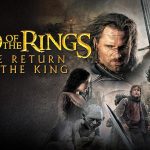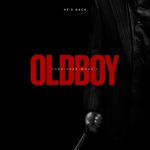12 Monkeys (1995)

Released in 1995, 12 Monkeys is a science fiction thriller that expertly blends elements of time travel, dystopia, and psychological drama. Directed by Terry Gilliam, known for his unique visual style and storytelling, the film stars Bruce Willis, Madeleine Stowe, and Brad Pitt in one of his most critically acclaimed roles. Based loosely on the 1962 French short film La Jetée, 12 Monkeys is a complex and thought-provoking narrative that has earned its place as one of the most iconic and intriguing sci-fi films of the 1990s.
Plot Overview
The film is set in a dystopian future where the human population has been decimated by a deadly virus, forcing survivors to live underground. James Cole (Bruce Willis), a convicted criminal, is chosen by the government to be sent back in time to 1996, just before the virus is released, in the hope of gathering information to stop its spread. However, time travel is not an exact science in this world, and Cole is mistakenly sent back to 1990, six years earlier than planned.
In 1990, Cole is arrested and committed to a psychiatric institution, where he meets Dr. Kathryn Railly (Madeleine Stowe), a psychiatrist, and Jeffrey Goines (Brad Pitt), a mentally unstable patient with radical anti-establishment views. As Cole tries to make sense of his mission, the film weaves a narrative that questions the nature of reality, time, and sanity.
As Cole is sent back and forth between the past and future, he becomes increasingly unsure whether he is truly on a mission to save humanity or if he is simply a delusional man in a world that doesn’t believe him. The mysterious “Army of the 12 Monkeys,” believed to be responsible for the release of the virus, is a central element of the plot, but the truth behind the epidemic is far more complex than it seems.

A Unique Visual and Narrative Experience
Terry Gilliam’s signature visual style is on full display in 12 Monkeys. The film is filled with disorienting angles, bleak settings, and a general sense of claustrophobia that reflects the protagonist’s disoriented mental state and the decayed world he inhabits. The stark contrast between the grimy, post-apocalyptic future and the seemingly more mundane but equally chaotic world of the past adds to the film’s tension and psychological depth.
The use of time travel in 12 Monkeys is not a conventional sci-fi trope where characters easily manipulate timelines. Instead, the film treats time as a fixed continuum, with events unfolding in ways that are predestined and inevitable. This deterministic approach adds layers of complexity and raises philosophical questions about free will, fate, and the nature of time itself.
Performances and Impact
Bruce Willis gives a standout performance as James Cole, capturing the character’s vulnerability, confusion, and grim determination as he navigates through a world where he constantly questions his own sanity. Willis’s portrayal of a man broken by both his mission and the time shifts is gripping, far removed from his typical action-hero roles of the time.
Brad Pitt’s role as Jeffrey Goines, however, is what truly stands out. His frenetic, wild-eyed performance earned him an Academy Award nomination for Best Supporting Actor. Pitt masterfully balances moments of humor, madness, and menace, making Goines one of the most memorable characters in the film. His portrayal of a man on the edge of insanity leaves the audience questioning whether Goines is a key player in the apocalypse or just another delusional figure in Cole’s chaotic journey.
Themes and Interpretation
At its core, 12 Monkeys is about the fragility of human existence and the futility of trying to control the future. The film delves into themes of mental illness, the inevitability of fate, and the potential dangers of technological advancement. It forces the viewer to consider whether humanity can ever truly learn from its mistakes or if we are doomed to repeat the same destructive patterns.
The movie also explores the concept of memory and perception, questioning whether what we remember and believe to be true is real or just a construct of our minds. This adds a psychological layer to the time travel narrative, where Cole’s visions of the past, present, and future blend together, creating a dreamlike atmosphere that leaves both the character and the audience in a state of constant uncertainty.
Suggested videos for you:











